Why Trust Gadgetbyte?
At Gadgetbyte, we invest substantial hours into rigorously testing each product or service we review, guaranteeing that you make informed purchases. Learn more about our testing process.
Review Overview
Design & Build
9/10
Display
9/10
Keyboard
8/10
Trackpad
8/10
Performance
9/10
Audio
8/10
Webcam
7/10
Battery
7/10
Value for Money
10/10
Lenovo Legion 5 Pro gets a lot of things for a gaming laptop—including its performance, cooling mechanism, display, and design. But a couple of secondary factors like battery life, keyboard, trackpad, and webcam are not that great here.
Lenovo’s Legion lineup consists of different varieties of gaming laptops—from the thin-and-light Slim 7 to the high-end Legion 7. And in this review, I’ll be discussing the new Lenovo Legion 5 Pro which is a 16” gaming laptop with all the latest processors, alongside a distinct design language to help it stand out among the crowd. Let’s begin.
Lenovo Legion 5 Pro Specifications:
- Design & Build: Plastic/anodized aluminum hybrid build, 14.02(W) x 10.25-10.41(D) x 0.85-1.07(H) inches, 2.45 kg
- Color Options: Storm Grey, Stingray White
- Display: 16″ anti-glare IPS panel, 165Hz refresh rate, 100% sRGB, 500 nits brightness, 178° viewing angle
- Display Properties: VESA HDR 400, Dolby Vision, Free-Sync, G-Sync, 3ms response time, DC dimmer, X-Rite Pantone factory color calibration
- Resolution: WQXGA (2560×1600) resolution, 16:10 aspect ratio
- Keyboard: Full-size backlit (4-zone RGB) keys
- Trackpad: Mylar surface (plastic) multi-touch trackpad, Windows Precision drivers
- Security: TPM 2.0 chip, No fingerprint sensor
- Processor: AMD Ryzen 7 5800H CPU (Cezanne), 8C/16T, 4.4GHz Max Turbo Frequency, 16MB L3 Cache, 7nm process, 45W TDP
- RAM: 16GB DDR4-3200MHz (2x 8GB), Up to 32GB
- Storage: 512GB M.2 PCIe 3.0 NVMe SSD (2x M.2 slots total)
- Graphics: NVIDIA GeForce RTX 3060 (130W), 6GB GDDR6 VRAM
- Audio: 2x 2W stereo speakers, Nahimic Audio
- Battery: 80 Watt-hours 4-cell Li-Po battery
- Power Supply: 300W slim tip (3-pin) AC power adapter
- Webcam: 720p HD camera, E-camera shutter, Dual-array microphones
- Connectivity: WiFi 6 (ax), Bluetooth 5.1
- I/O Ports: 4x USB 3.2 Gen 1 Type-A (1x Always On), 2x USB 3.2 Gen 2 Type-C (1x Power Delivery), 1x HDMI 2.1, 1x 3.5mm combo audio jack, 1x RJ45 (LAN), 1x power connector
- Price in Nepal: Rs. 250,000 (Ryzen 7 5800H, RTX 3060, 16GB RAM, 512GB SSD)
- What’s inside the box: Laptop, power adapter, quick start guide
Lenovo Legion 5 Pro Review:
Design
- 14.02(W) x 10.25(D) x 0.85(H) inches, 2.45 kg
- Plastic, anodized aluminum hybrid build quality
As usual, let’s kick things off with the design. Coming from the HP Omen 15, one could say that this is a flashier-looking laptop. Especially with that Legion “Y” branding on the lid which glows steady white when you have the power plugged in. But if that’s a little too much, you can always disable it with the “Fn + L” shortcut.
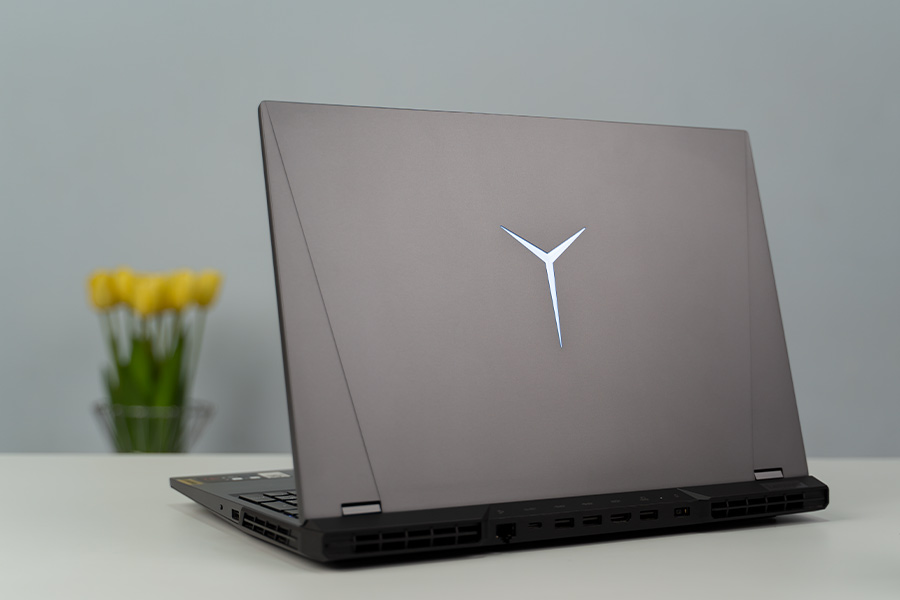
Anyway, the Legion 5 Pro is pretty well-built. It features anodized aluminum material on the lid and the bottom chassis—while the keyboard deck and trackpad are all plastic-made. And thanks to their matte finish, this laptop doesn’t attract fingerprints or smudges as much either.
But weighing 2.45kg, it is one of the heaviest laptops I’ve tested this year. Add the comically large power adapter into the mix, then you’re looking at quite the bulky setup with the Legion 5 Pro. However, it’s crucial to understand that Lenovo has fitted a 16” display on this 15.6” chassis.
the added heft does bring a larger screen real-estate which I’m sure is a fine trade-off for many.
The bezels are minimal all-around to accommodate a 16:10 aspect ratio but you can still argue that the bottom bezel could’ve been smaller. I mean, take the Asus ROG Zephyrus M16 for instance. It has a similar 16” 16:10 display like this one, but Asus has managed to deliver a relatively slimmer chin. Of course, it’s not a deal-breaker to anyone, so I’ll let it pass.
Ports, lots of ports
Moving on, the Legion 5 Pro has quite a sturdy hinge. Although it can’t lay 180° flat, it’s subject to minimal wobbles and feels robust enough to ward off any durability concerns. And yeah, you can pop it open with one hand as well. Getting to ports, this gaming laptop has every I/O you need.
There’s a 3.5mm combo audio jack and a USB 3.2 Gen 2 Type-C with DisplayPort 1.4 support on the left. Similarly, the opposite side hosts a USB 3.2 Gen 1 Type-A and a camera-kill E-shutter button. With Lenovo laptops, we’re used to seeing dedicated camera shutter buttons where the webcam is.
Review Images
1/3
Left
And I’m not sure if this implementation is as good as that. Folks extra-concerned with privacy will definitely want to tape up the webcam—and considering this camera’s quality, you won’t be missing out on much either. More on that later.
Regardless, the back of the Legion 5 Pro includes additional connectivity options, starting with one Ethernet, one HDMI 2.1, three USB 3.2 Gen 1 Type-A, and an additional USB 3.2 Gen 2 Type-C port—but this one supports Power Delivery too. On top of this, you’ll also find Lenovo’s proprietary power connector here.
Display
- 16" anti-glare non-touch QHD IPS panel
- 165Hz refresh rate, 100% sRGB gamut
- VESA HDR 400, Dolby Vision compatible
In terms of display, as I mentioned earlier, the Lenovo Legion 5 Pro has a 16” screen. While the company offers multiple display options for the cheaper Legion 5 or the Slim 7, the 5 Pro sticks with a single configuration. You’re getting a 16” QHD screen with a 165Hz refresh rate, 3ms response time, 500 nits of brightness, and 100% sRGB color space.
Lenovo also says this is the world’s first 16” QHD gaming laptop with a 165Hz refresh rate but that’s neither here nor there. But what is commendable is that this screen is VESA Display HDR certified and it also supports Dolby Vision HDR for excellent colors and contrast levels.
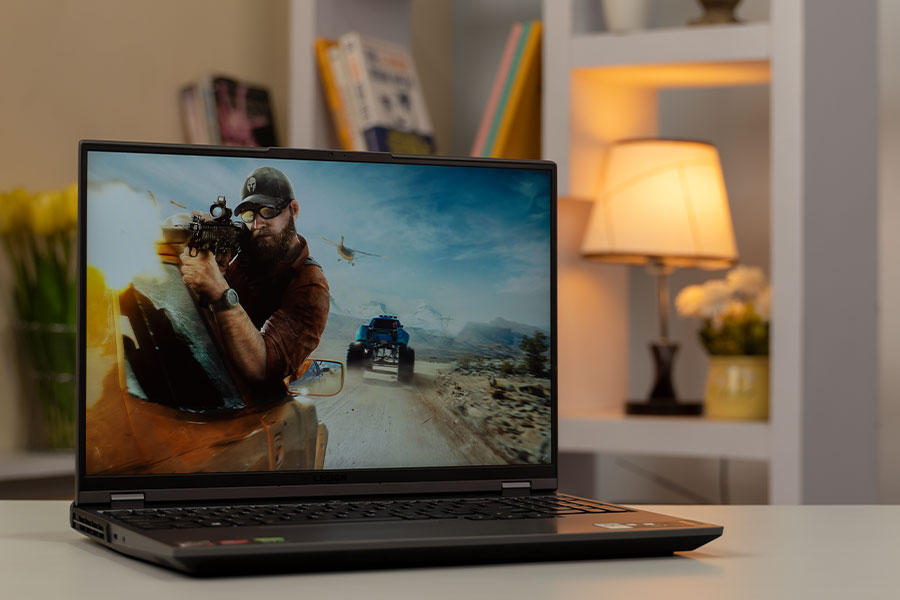
It comes pre-calibrated, whereas the X-Rite Color Assistant lets you choose between multiple color profiles like sRGB and Rec. 709—or leave it as is. For most of my usage, I switched to the sRGB profile and found that it delivered accurate color reproduction even though I expected more than a 1190:1 contrast ratio on this thing. The white balance looks good while the viewing angles leave no room for complaint either.
Can stay visible all day, err day
And if you’re a photographer or deal with color-sensitive workloads, the Rec. 709 profile will suit you best. With 513 nits of measured brightness, this display gets mighty bright as well. Setting the brightness level to about 45-50% does the trick in most indoor situations. Besides, the Legion 5 Pro maintains great visibility even under a well-lit room or when you’re out on a sunny day.
Plus, the matte coating on this surface means it won’t catch light as much either—thereby relieving you of the hassle of repositioning your setup to get a comfortable viewing experience. Complemented by a sharp QHD resolution, the Legion 5 Pro boasts one of the most impressive laptop displays.
Review Images
1/3
Color Gamut
Additionally, the 165Hz refresh rate feels smooth—although maybe not as smooth as the MSI GP66 Leopard that I tested recently which had a 240Hz refresh rate. Finally, thanks to the added vertical space with the 16:10 aspect ratio, my regular office chores have also gotten relatively simpler on this machine. More content, less scrolling is always a thumbs up in my books.
I must say, even games look comparatively more immersive on this screen. Talking about games, there’s NVIDIA’s G-Sync technology to prevent any screen tearing issue too. Overall, the display is one of the strongest suits of the Legion 5 Pro. If I absolutely had to nitpick, there is a mild screen bleeding at the bottom right corner but it’s nothing to worry about.
Keyboard
- Backlit full-size keys (4-zone RGB)
On to the keyboards, there are a couple of options available. The entry-level Legion 5 Pro gets you a simple white backlit keyboard while the Stingray White color variant hosts blue-backlit keys. Kicking things up a notch, the more powerful variants have quad-zone RGB lighting like this.
I know many people—including a few of my colleagues—like this Legion TrueStrike keyboard but I’m a little on the fence here. The key travel distance is just fine but its soft feedback is almost “springy” to me. Even after a week or so of trying to get used to it, I find this keyboard a little off-putting.
And although these keys don’t rattle at all, they’re pretty noisy. Regardless, these concave keys are full-sized, except for the Numpad which is rather compact. Let’s now talk lighting. Under the Lenovo Vantage app that comes pre-installed, you can switch between a bunch of lighting profiles with 5 effects in total.
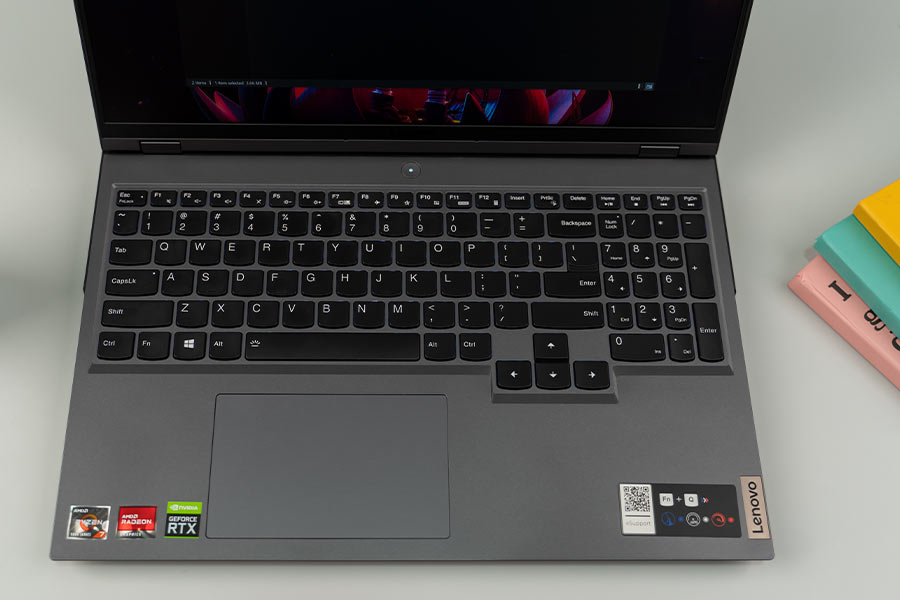
Or better yet, the “Fn + Spacebar” shortcut toggles through the lighting presets as well. Even though all the key decals are well lit, they’re not the brightest I’ve seen. Still, with two levels of brightness to choose from, this keyboard stays perfectly visible in a dark room.
Trackpad
- Mylar (plastic) trackpad
- Integrated left/right keys
Like I said earlier in this review of the Lenovo Legion 5 Pro, the trackpad here is plastic-made so it’s not as smooth as glass trackpads. As a result, I did notice a few instances where my finger wouldn’t glide as evenly due to friction—especially when using multi-finger gestures.
I guess because this is a gaming laptop, Lenovo figured most people would opt for a discrete mouse anyway—so they opted for a mediocre trackpad. Like the keyboard, the integrated left/right keys are a bit noisy too.
Audio
- 2x 2W side-firing speakers
- Supports Nahimic audio
In terms of audio, the Legion 5 Pro has a standard dual speaker setup with 4W of total output. At least the driver units aren’t mushed underneath the bottom chassis, which is something. Instead, they’re right between the frame and the lower half of the laptop so the audio doesn’t get muffled as much. Furthermore, the rubber feet are pretty tall, which gives these speakers more room to breathe.
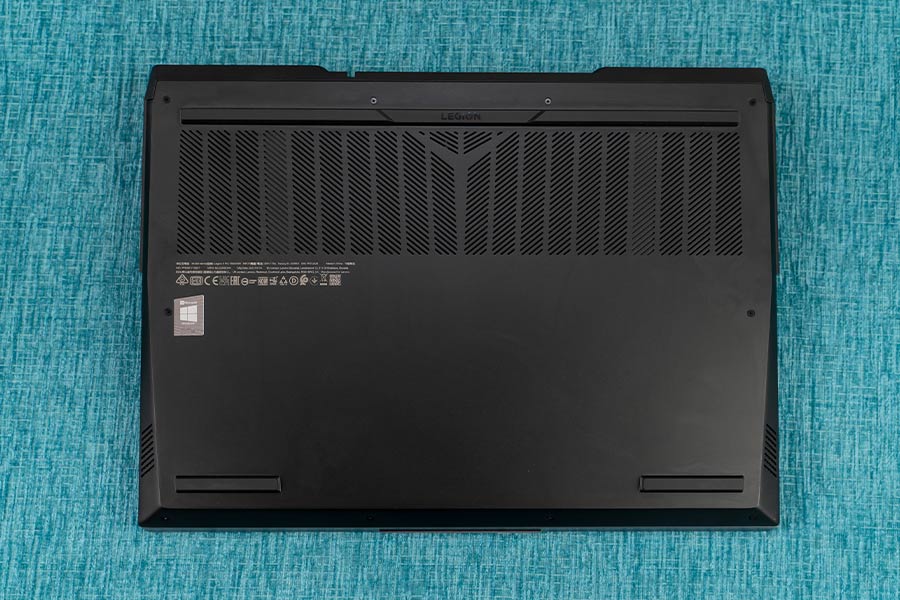
As for their actual quality, as you’d imagine, there’s not much to expect in terms of bass. In the default equalizer setting, the mids sound quite clear—but overshadow the trebles. These speakers can get decently loud, and with a little bit of meddling around with equalizers under the Nahimic app, you can achieve a fairly balanced audio output as well.
Webcam
- 720p HD camera
- E-camera shutter
When it comes to the camera, the Lenovo Legion 5 Pro has a basic 720p webcam on the top bezel. There isn’t a physical shutter button this time, which has been substituted with a camera-kill switch on the side instead.
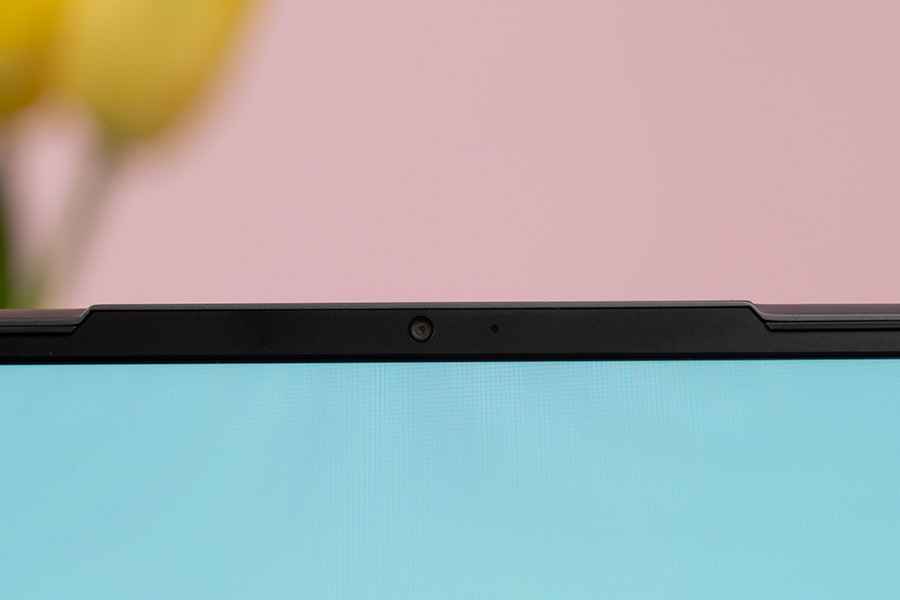
And right away, if you’re a streamer or someone who attends virtual meetings way too often, this won’t cut it. Subjects look way too soft and the bloom effect when there’s a direct light source behind you is rabid. The audio pickup from the array microphones isn’t half bad—whereas the “Lateral Sound Cancellation” feature drowns out ambient low-frequency noises by quite a bit.
Performance
- AMD Ryzen 7 5800H CPU (45W TDP)
- NVIDIA RTX 3060 130W (discrete GPU)
- 16GB DDR4 RAM, 512GB PCIe NVMe SSD
Okay, allow me to get into the performance side of things now. Legion 5 Pro can be configured with AMD’s Ryzen 5 5600H or Ryzen 7 5800H CPU while the GPU options range from RTX 3050 to 3070. I have the Ryzen 7 5800H variant with RTX 3060 GPU, 16GB DDR4 RAM in dual-channel, and 512GB M.2 NVMe SSD.
This model goes for about USD 1,755 in the US, while it costs around INR 140,000 in India. Unfortunately, it’s priced a bit steep here in Nepal, retailing at NPR 250,000.
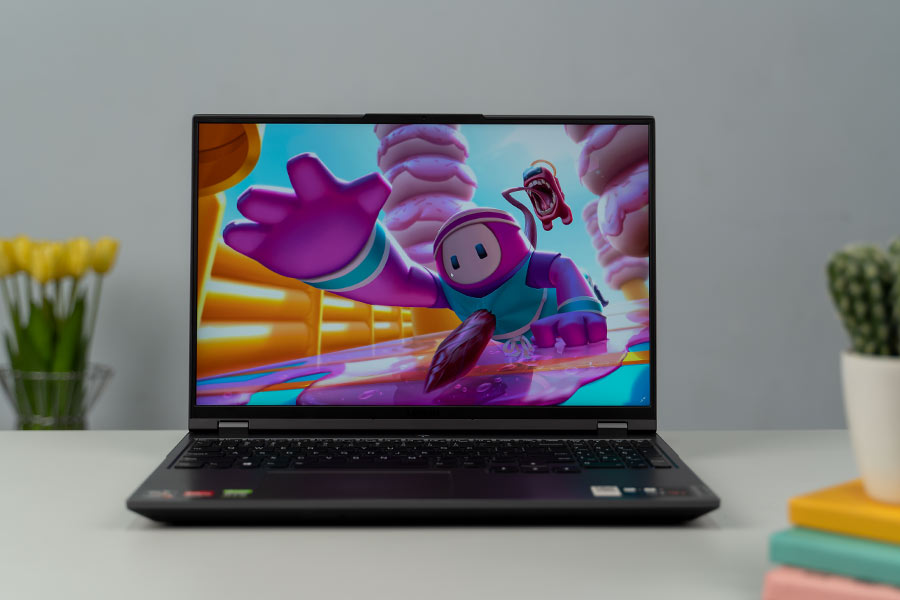
But if you want something similar for a little less, there’s also the regular Legion 5 with the same silicons. Despite its barely thinner chassis, it also brings a 130W RTX 3060. For this review of the Lenovo Legion 5 Pro, we also compared it against the standard Legion 5.
And we found that the Legion 5 has a relatively worse cooling system and a noticeable performance throttling under heavy load. Let’s compare the 1080p gaming performance of these two devices.
Gaming results
Here, you can get around 128-140fps on Apex Legends under Very High graphics settings, where the Legion 5 Pro stays comparatively cooler. Control is easily playable on the 5 Pro at High settings with Ray Tracing turned on as it manages about 48fps on average. After a little over an hour, it drops to the 38-40fps category. But things are far worse on the Legion 5 since the frame drop dips to just 23-26fps which is incredibly stuttery.
| 1080p Gaming Benchmarks | |||
| Performance mode (power plugged in), VSync Off, DLSS Off | |||
| Game | Settings | Average FPS | |
| Legion 5 | Legion 5 Pro | ||
| Cyberpunk 2077 | Texture quality: High | 16-18fps | 23-26fps |
| Ray Tracing: Ultra | |||
| Texture quality: Medium | 38fps | ||
| Ray Tracing: Medium | |||
| Control | Texture resolution: Ultra | 41-45fps | 48fps |
| Ray Tracing: High | |||
| GTA V | Texture Quality: Very High | 86-93fps | 115fps |
| Reflection Quality: Ultra | |||
| Apex Legends | Texture Streaming: Very High | 128-140fps | |
| Anti-Aliasing: TSAA | |||
| CS: GO | Texture Detail: High | 170-190fps | |
| Anti-Aliasing: 8X MSAA | |||
| FIFA 22 | Texture Quality: Ultra | 190fps | |
| Anti-Aliasing: 4X MSAA | |||
Playing Cyberpunk 2077 at the highest possible setting with Ray Tracing set to Ultra is no good on either of them. While the Legion 5 delivers a meager 16-18fps on average, the 5 Pro is marginally better with 23-26fps. Dialing down Ray Tracing to Medium, the game is a lot more playable at about 38fps on both laptops.
GTA V plays relatively better on the Legion 5 Pro at its max graphics settings with about 115fps on average—contrary to 86-93fps on the Legion 5. Moving on, other less demanding titles like CS: GO and FIFA 22 are no trouble to these gaming beasts. At their respective highest settings, I got about 170-190fps in CS: GO and 190fps in FIFA 22 on average in both laptops.
Stays admirably silent
While fans get fairly noisy under heavy load on either device, the ones on the Legion 5 Pro manage to keep the temperatures in check effectively. Compared to HP Omen 15 (2021) or the MSI GP66 Leopard, switching to the highest performance mode doesn’t crank up the fan speed willy-nilly either. Only under CPU/GPU taxing workloads will you hear the fan noise.
On the other hand, the heat is spread out pretty much evenly across the keyboard deck—with the Enter key area getting noticeably hotter. The CPU and GPU temp reach up to 85 and 79°C, respectively but I had no trouble keeping my wrists atop the laptop.
With that out of the way, you could probably already tell that this thing just flies in terms of regular everyday usage. Because of the minimal fan noise, I used it under the “Performance” mode for best results most of the time. The low-hum of the fans is audible in a completely silent room, but it’s not a big deal.
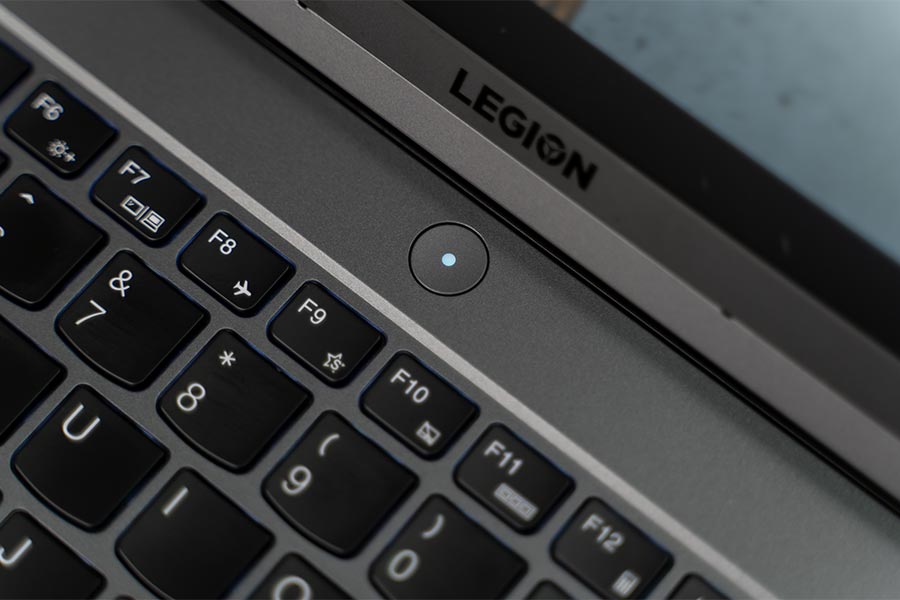
Also, switching to the Quiet profile resulted in a noticeable drop in CPU performance—so there’s that. One cool thing you’ll notice is that the power button indicates the current thermal mode, which glows red for “Performance”, white for “Balance”, and blue for “Quiet” mode.
Lenovo Legion 5 Pro Review: Benchmarks
Anyway, thanks to its efficient cooling system, the Legion 5 Pro delivered better CPU performance than HP Omen 15 (2021) with Ryzen 7 5800H—and even the Intel i7-11800H-powered MSI GP66 Leopard (11UG) under synthetic benchmarks like Cinebench R23 and Blender.
Blender (CPU)
| Lenovo Legion 5 Pro (2021) | MSI GP66 Leopard (11UG) | HP Omen 15 (2021) | |
| bmw27 | 3m18s | 3m38s | 3m42s |
| classroom | 8m38s | 10m4s | 9m39s |
| fishy_cat | 4m14s | 4m56s | 4m50s |
| koro | 6m31s | 7m12s | 7m22s |
| pavillon_barcelona | 8m52s | 10m20s | 10m1s |
| victor | 14m48s | 17m25s | 16m14s |
- Time taken lower is better
Cinebench R23
| Lenovo Legion 5 Pro (2021) | MSI GP66 Leopard (11UG) | HP Omen 15 (2021) | |
| CPU: Multi-Core | 12828 | 10811 | 11255 |
| CPU: Single Core | 1355 | 1457 | 1343 |
| MP Ratio | 9.47x | 7.42x | 8.38x |
- Higher is better
Geekbench 5
| Lenovo Legion 5 Pro (2021) | MSI GP66 Leopard (11UG) | HP Omen 15 (2021) | |
| CPU: Single Core | 1397 | 1515 | 1257 |
| CPU: Multi-Core | 7383 | 8901 | 6971 |
| Compute (OpenCL) | 95730 | 125139 | 108059 |
- Higher is better
CrystalDiskMark
| Read (MB/s) | Write (MB/s) | |
| SEQ1M Q8T1 | 3605.62 | 2955.55 |
| SEQ1M Q1T1 | 1976.52 | 1722.29 |
| RND4K Q32T1 | 520.39 | 381.18 |
| RNK4K Q1T1 | 64.69 | 152.48 |
- Higher is better
(FPS: 138.5, Score: 3489, Min FPS: 9.3, Max FPS: 295.0)
- Higher is better
| API: OpenGL | Multi-monitor: Disabled |
| Quality: High | Anti-aliasing: x2 |
| Tessellation: Extreme | Fullscreen: Yes |
| Stereo 3D: Disabled | Resolution: System |
3DMark
| Overall | Graphics | Physics | Combined | |
| Fire Strike Extreme v1.1 | 9935 | 10193 | 24370 | 4782 |
| Fire Strike Ultra v1.1 | 5309 | 5142 | 24271 | 2755 |
| Total | Graphics | CPU | |
| Time Spy v1.2 | 8838 | 8795 | 9095 |
- Higher is better
Its dual-fan design is complemented by quad-channel exhaust vents on the sides and a large air-intake vent on the bottom. RAM management here is pretty efficient as well. But in a couple of instances, Google Chrome failed to keep a bunch of tabs in memory when I had Photoshop running in the background.
What about the upgradability?
As expected from a gaming laptop, most of the internal components are upgradable on the Lenovo Legion 5 Pro. You have 2x SO-DIMM slots that can hold up to 32GB of DDR4 memory. Similarly, only one of the two M.2 NVMe slots is pre-occupied and you can install up to 2TB of SSD in total.
Likewise, wireless connectivity options here include Wi-Fi 6 and Bluetooth 5.1—and I’m not sure if it’s just a quality control issue on my unit but the onboard Realtek Wi-Fi card gave up on me a couple of times.
On several occasions, the Wi-Fi speed would drop to just 10% of the actual bandwidth. I tested it out in a couple of networks and the result was the same—which would go away once I’d restarted the laptop.
Battery
- 80 Watt-hour 4-cell attery
- 300W AC power adapter
Fueling the Legion 5 Pro is a sizable 80 Watt-hour battery. Sad to say, the actual battery life from this thing isn’t that great. Usually, I’d set its brightness at 45-50%, turn on the Balance mode (since Performance mode is absent without plugging in power), and blast the 165Hz refresh rate at all times.
even under my regular office workload, it managed to provide just 3-4 hours of screen-on time.
Maybe those numbers could’ve gotten better when setting the device to “Quiet” profile—but with the aforementioned performance dip, I didn’t go about testing it. Switching on the Hybrid Mode which toggles between the iGPU and dGPU depending on the context, the Legion 5 Pro does get you about an hour of additional battery life.
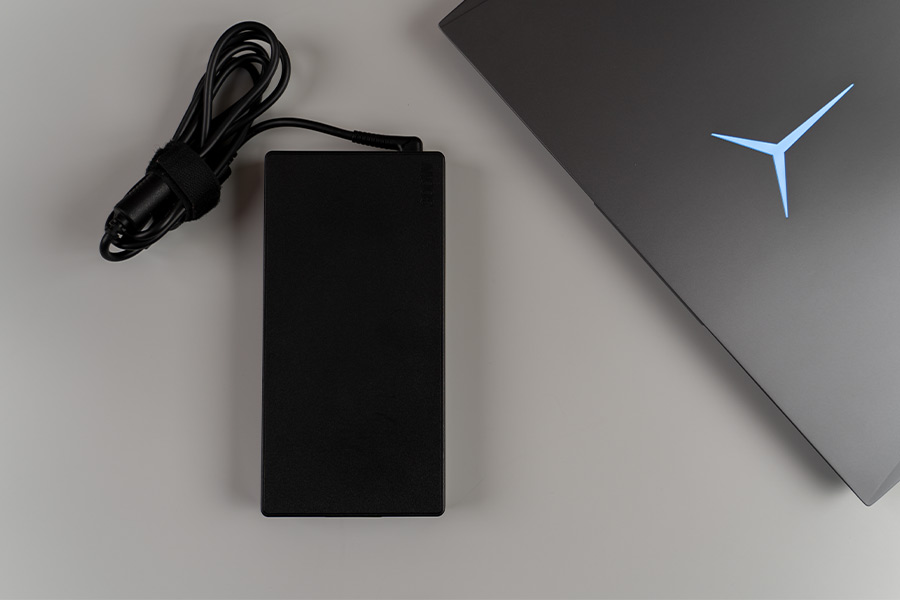
Unfortunately, the laptop gets warm rather quickly under this. On top of this, during the brief moment before the switch from iGPU to dGPU—you can notice oversaturated colors, especially when streaming videos off the web.
Easy solution
It had been a while since I last came across this issue. But it’s not exactly the kind of déjà vu I was hoping for. Solving it is pretty easy—all you gotta do is manually set the graphics preference to the discrete GPU for the required app. All in all, I don’t reckon the slight boost in battery life under the Hybrid Mode is worth this hassle or the warmer thermals.
To juice up the battery, Lenovo ships this ridiculously bulky 300W power adapter. While it does ensure a stable power supply and the power brick itself doesn’t get very hot, the sheer size of this thing is quite distasteful.
Regardless, the Legion 5 Pro goes from 0 to 100% in a little under 2 hours. Plus, Lenovo says turning on Rapid Charge takes it from 0 to 50% in just 30 minutes. But of course, this will raise concerns regarding battery health in the long run, so I stayed away from it entirely.
Lenovo Legion 5 Pro Review: Conclusion
Let’s wrap up this review of the Lenovo Legion 5 Pro. From everything I’ve discussed so far, it’s pretty clear that I’m a big fan of this gaming laptop. It has quite a sturdy build quality, a stunning display, powerful performance, and an effective thermal solution.
Sure, Lenovo hasn’t delivered a perfect gaming laptop as evident from the mediocre battery life and the "springy" keys. But those are a couple of dismissable aspects for a device in its category.
Compared to the standard Legion 5, the Pro variant is easily worth the extra money. And if you’re looking for something with a little more pizzazz, then the Lenovo Legion 7 with its even more premium build quality and all the RGB lighting looks like a decent option as well.
- Watch our video review of the Lenovo Legion 5 Pro.
- Decent value for money
- Relatively premium design
- Rich port selection
- Sharp 165Hz display
- 16:10 aspect ratio
- Excellent gaming performance
- Fans stay relatively quiet
- A bit too soft key feedback
- No glass trackpad
- Below-average battery life
- Chonky 300W power adapter
- Dismissable webcam

To say something about myself, I have been writing tech and gadgets from 2021. Although coming from a non technical studies background, I'm someone who is always fascinated by the latest gadget and tech innovations, circling around. Besides writing, you'll find me listening music and aligning the stars through astrology and sometimes even, tarot cards! 😉🧿
Comments
No comments yet. Add a comment to start a discussion

















